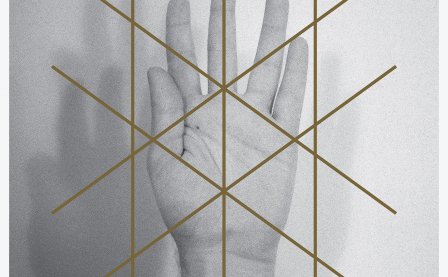If you’ll indulge an unfair comparison, consider Valerio Tricoli’s 2014 album Miseri Lares. Without making determinations of causality or intention, we can say that Tricoli simultaneously achieved precise uniformity of tone and spectral vagueness of place; Miseri Lares was domestic horror detached from traditional notions of spatiality, with moaning and creaking emanating from each direction in such a way that scrambled the codes of material logic. John Wiese’s Deviate From Balance seems to sacrifice such unproblematic consistency of tone at the same time as it hyperlocalizes, employing a (superficially) similar method to Tricoli’s but arriving at a kind of antithesis. Track titles refer to addresses, cities, businesses, and nonphysical specificities, creating at least the illusion that Wiese conceives of each track as a document of an experientially particular circumstance. Separately from the Gilgongo Records release of Deviate From Balance, Hesse Press has published Wiese’s book of the same name, including an essay by Bruce Russell, visual art by Wiese (some of which is directly related to Deviate From Balance the LP, some of which is not), and photography and design drawn from throughout Wiese’s career. Is the album embroiled within a personal history so inaccessible to the impartial listener that, in isolation, the music is but one of an oeuvre’s many oddities? How do I fairly represent that?
The irony of Deviate From Balance is that both the album and the textual anthology speak to the relation between the two, and as such, the dependence of each upon the other is the source of their power. Each side of the coin speaks to the positioning of the whole coin. This isn’t a unique quality in isolation (it calls to mind Michael Pisaro’s Gravity Wave label and its hypertextual packaging), but it becomes a point of interest here due to the difference of scope between the individual work and the genealogy of an artistic practice. As much as Deviate From Balance the book is an attempt to particularize Wiese’s career by placing a number of distinct artifacts in one narrative, Deviate From Balance the album is a zooming out, a statement of purpose, and a mixed bag of techniques. In that sense, the titular deviation refers to the circuitous project of proceeding recursively through the general toward the specific.
Russell summarizes Marx in his essay: “Our senses (like all aspects of human reality) are ‘historical.’” This assertion can at once be considered pedantically prior and foundationally crucial to Wiese’s method. Russell prefers considerations of Wiese’s mixed media works relating to Walter Benjamin’s concept (taken from the Arcades Project) of “exploding kitsch” and an original aesthetic class he refers to as “maximal Minimalism.” In his description of the latter, Russell concedes the obvious fact that, in isolation from the theoretical obscurities of modernist critique, Wiese is principally concerned with seeking out the boundaries of materialism proper. Looking more closely at the music on the album as text, we find a celebration of experience before anything else. From the opening, right-panned drone of “Wind Changed Direction,” recordings are in dialogue with one another in the vacuum of the audio workstation. Instead of looking for the irreducible currents below the sense of spatial belonging, Wiese plays with the new dissimulations, spaces, and logics that must always emerge out of deconstruction.
While Deviate From Balance is chiefly interested in the new, much of its energy is consumed in representing the old. “Segmenting Process for Language” and “Cafe OTO,” for example, are tracks built using a method of tape manipulation not unlike the rest of the album, but among the complex tableau of sources is a freewheeling brass section not completely removed from Coltrane circa Interstellar Space. Drums play a more pronounced role on the “(Portland)” reprise of “Segmenting Process.” And while Wiese’s documents are never simply that (a fact intimately related to his purpose, if he has only one), “Memaloose Walkman” is close to pure field recording save for some radio-dial interruption and makes for one of the record’s only moments commanded by the interesting features of an isolated source of sound. For all of Wiese’s hypertextually critical gestures, his maneuverings are meant to be situated within the constellations of jazz and mid-century tape music. It’s within these networks that Wiese’s scramblings, errors, and transcendences are constituted as such.
Existing space travels through Wiese’s algorithm of imbalance and becomes reorganized, made new, unmapped. Deviate From Balance advocates no method, but instead describes a teleos of artistic expression. The 10 tracks on this record differ in their complexity as well as the circumstance of their recording, but that teleos frames each iteration. Each is unique, but in combination with the others, creates something critical, or “metacritical.” It is in that sense that Deviate From Balance is both an incidental veering off-course and the essential John Wiese; a portrait of a figure always already escaping from view.
More about: John Wiese




